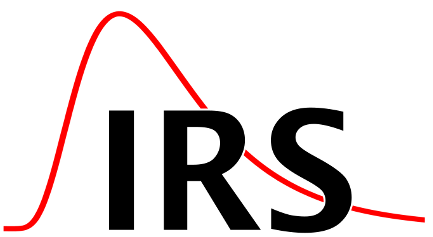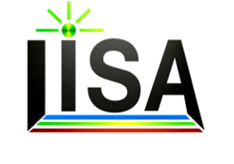-
Augmented Concepts In Nuclear and Radio Chemistry (A-CINCH)Augmented CINCH (A-CINCH) is already the fourth project in the series of CINCH (Coorperation In Nuclear and radio CHemistry) projects funded by the EU under Euratom FP7 and H2020. During the projects, many modern and digital methods and tools have been developed to promote radiochemistry education and to attract new talents, this includes a Massive Open Online Course (MOOC), remote controlled experiments (RoboLabs) and interactive screen experiments (IBE).Led by: Vivien PottgießerTeam:Year: 2017Funding: Europäische Union – H2020 Förderkennzeichen: 945301Duration: 10.2020 - 30.09.2023
![]()
![]()
-
Investigation of the transfer behavior of americium species in crop plants using radiochemical and mass spectrometric methodsAmericium-241 with its half-life of 432.2 a represents an environmentally relevant radionuclide in the Chernobyl exclusion zone. Due to being a decay product of Plutonium-241 with a shorter half-life of 14.35 a, Americium-241 represents the dominating alpha emitter in the contaminated areas. Via the contaminated soil, crop plants could take up the radiotoxic nuclide, which is a potential pathway into the human nutrition chain. Therefore, gaining knowledge and insight into the soil-plant transfer processes and its impact factors are highly relevant.Team:Year: 2018Funding: Siebold-Sasse-Stiftung (www.sasse-stiftung.de)Duration: 01.03.2018 – 28.02.2021
![]()
![]()
-
LISALISA aims to train the next generation of atomic, nuclear and laser scientists by conducting research to increase our understanding of the atomic and nuclear properties of the chemical elements known as the actinides. Of long-standing interest to the fields of fundamental atomic and nuclear physics, this effort is an essential prerequisite for unravelling the structure of the superheavy elements at the end of Mendeleev’s table. This knowledge is required for the effective production, identification and handling of these elements, and is thus a necessary foundation for our goals of understanding and exploiting the potential for practical applications of the actinides in the fields of medical physics, nuclear applications and environmental monitoring.Year: 2019Funding: ITN: Marie Skłodowska-Curie Innovative Training NetworksDuration: 01.11.2019-31.10.2023
![]()
![]()
-
Transdisciplinary research on the disposal of high-level radioactive waste in Germany (TRANSENS)TRANSENS (www.transens.de) is a joint project of 13 institutes and departments of German universities and major research institutions, one department of ETH Zurich and two independent research and consulting institutions. Especially a highly controversial project such as the selection of a site with the best possible safety and the realisation of a repository for high-level radioactive waste is likely to provoke social controversy and resistance. Therefore, the clarification and processing of complex and socio-technically challenging questions concerning nuclear waste disposal is indispensable. Research in TRANSENS is interdisciplinary. This means that the interested public and other non-academic actors are systematically involved in research contexts, specifically in transdisciplinary work packages (TAP). The research will be carried out in subject corridors that are central and relevant to the disposal problem and that are located at the interface between scientific-technical research on the one hand and social science and humanities research on the other. The aim is to create a science-based, experimental landscape that will enable scientific conclusions to be drawn about the disposal path to be followed. In this context, the IRS is working on the TAP TRUST (technique, uncertainties, complexity and trust)Led by: Prof. Dr. Clemens WaltherTeam:Year: 2019Funding: Federal Ministry for Economic Affairs and Energy, Volkswagen Foundation, Ministry for Science and Culture of Lower Saxony; Funding number: 02E11849A-JDuration: 01.10.2019 - 30.09.2024
![]()
![]()
-
Speciation of plutonium: Investigations of the formation, stability and radiolysis of colloids of different plutonium isotopesThe aqueous chemistry of plutonium is very complex as it can be present in several oxidation states at the same time. Therefore it can form many different species, varying in properties like solubility, mobility etc. Colloids are formed from an over-saturated aqueous solution of tetravalent plutonium and play an important role in increased mobility which could lead to a release of plutonium from the final storage of radioactive waste. In previous studies, executed independently of each other, results of colloids of 239Pu and 242Pu particular for structure were contradictory. The main difference between these isotopes is their specific activity, which indicates that varying amounts of alpha radiation could have an influence on the formation and the aging processes of the colloids. However, different isotopes of plutonium were used and the experiments were carried out in various media. This project, funded by the Siebold-Sasse-Foundation, is intended to gain detailed knowledge of the formation mechanism and structures of colloids produced in different media (nitrate, chloride, perchlorate).Team:Year: 2019Funding: Siebold-Sasse-StiftungDuration: 01.06.2019 – 31.05.2022
![]()
![]()
-
Secondary Ionisation of Radioactive Isotopes for Ultra trace analysis with Spatial resolution (SIRIUS)The behaviour of plutonium in the environment is of high importance in the field of radioecology. Previous studies show that a sole ultra-trace analysis of plutonium does not give answers to all issues in question. It is due to the complex chemical binding properties, that detailed speciation analysis is inevitable to understand the behaviour in the environment properly.Led by: Prof. Dr. Clemens WaltherTeam:Year: 2019Funding: BMBF 2020+ 02NUK044ADuration: 01.01.2016 - 31.12.2019
![]()
![]()
-
Remote alphaRemote and real-time optical detection of alpha-emitting radionuclides in the environment (JRP-v09) The overall goal of this project is to develop novel optical systems for the remote detection and quantification of large-scale contamination with alpha emitters in the outdoor environment for the very first time, allowing sound and quick countermeasures in case of a radiological emergency. The specific objectives of this project are: 1. To develop a new method and instrumentation for the optical detection of alpha particle emitters in the environment by air radioluminescence. This includes the development of the first prototype of a mobile-outdoor optical detection system for real-time radioluminescence mapping of alpha sources in the environment. 2. To develop and establish a calibration system for the novel-type radioluminescence detector systems. This includes a new metrological infrastructure with dedicated UV radiance standard, well characterized alpha-active environmental samples and a validated calibration scheme for the remote detection of optical systems. 3. To extend the optical detection system to an imaging functionality for mapping of alpha contaminations in the environment. This includes the development of an unmanned airborne monitoring system (UAMS) that will integrate the unmanned aerial vehicle (UAV) and the novel alpha-radioluminescence detection system developed in the objective 1 to scan and obtain an image of the contaminated area. 4. To prepare and run a feasibility study for a laser-induced fluorescence spectroscopic method for the detection of alpha emitters. This method complements alpha-radioluminescence and, depending on laser parameters such as pulse power, photon wavelength and pulse duration, can enhance the detectable activity limit to below 1 kBq/cm². 5. To facilitate the take up of the results by stakeholders and provide input to relevant standardization bodies and radiation protection authorities. Information on the project research results will be disseminated by the partners to standards committees, technical committees and working groups. In addition, knowledge will be transferred to the nuclear industry sector.Led by: Koordinator: PTBYear: 2020Duration: 01.03.2020-28.02.2023
![]()
![]()
-
Radionuclide Remediation using natural Association processes (RENA)The aim of the project is to develop a process for the ex situ treatment of radionuclide-contaminated soil from the dismantling of nuclear facilities. For this purpose, the potential of biology (plants, fungi) for the mobilization and removal of radionuclides from soils is investigated. The aim is to significantly reduce the volume of intermediate and low-level radioactive waste. Our investigations are based on soils that have already been excavated and pretreated. The polycyclic aromatic hydrocarbons (PAHs) originating from the construction sector are considered as characteristic and additional organic contamination. The holistic approach, which combines soil microbiological, mineralogical, geo- and radiochemical aspects, is being prepared for implementation in a reactive transport model. With such numerical approach, predictions about the efficiency, quantitative influencing factors and in particular transferability to other soil materials from deconstruction projects should be possible.Led by: Prof. Dr. Clemens WaltherTeam:Year: 2021Funding: Bundesministerium für Bildung und Forschung, Förderkennzeichen 02NUK066CDuration: 01.09.2021-31.08.2024
-
Spurendetektion und ortsaufgelöste Analyse von Radionukliden mittels Laser-Ionisations-Massen-Spektrometrie (SOLARIS)Building on the results of the SIRIUS[1]-project, the method of rL-SNMS (resonant Laser Secondary Neutrals Mass Spectrometry) will be improved. This method allows the special resolved detection of actinides like plutonium and americium of less than 107 atoms. The SOLARIS project will focus on the measurement of radioactive particles from the environment, the investigation of the migration-behavior of actinides in clay rock and hydrated cement as well as the improvement of the rL-SNMS. [1] FöKZ 02NUK044ALed by: Prof. Dr. Clemens WaltherTeam:Year: 2022Funding: BMBF 2020+ 02NUK075ADuration: 01.09.2022 - 31.08.2025
![]()
![]()
-
Transfer of long-lived radionuclides from the vadose zone into the rhizosphere and their uptake by plants under consideration of microbiological processes (TRAVARIS)Based on the findings from TransLARA on the transport and transfer of radionuclides in the soil-plant system, the interaction of radionuclides with root exudates and their influence on microbial communities in the rhizosphere, as well as vice versa the microbial influence on processes in the soil, will be investigated in laboratory experiments in the TRAVARIS joint project. Furthermore, fluctuating groundwater levels, and thus changes in the redox potential in the soil can lead to a potential remobilisation of certain radionuclides. By varying the water level in laboratory lysimeters, the potential re-mobilisation and transport of the tracers present are observed. The combination of modelling and experimental work in the consortium for a more detailed understanding of the soil- and nuclide-specific uptake of radionuclides in plants, also taking microbial processes into account, thus contributes to an improved predictive power of radioecological models and more reliable risk assessments for the general public and the environment.Led by: Prof. Dr. Clemens WaltherTeam:Year: 2022Funding: BMBF 2020+ 15S9437BDuration: 01.11.2022 - 31.10.2025

















